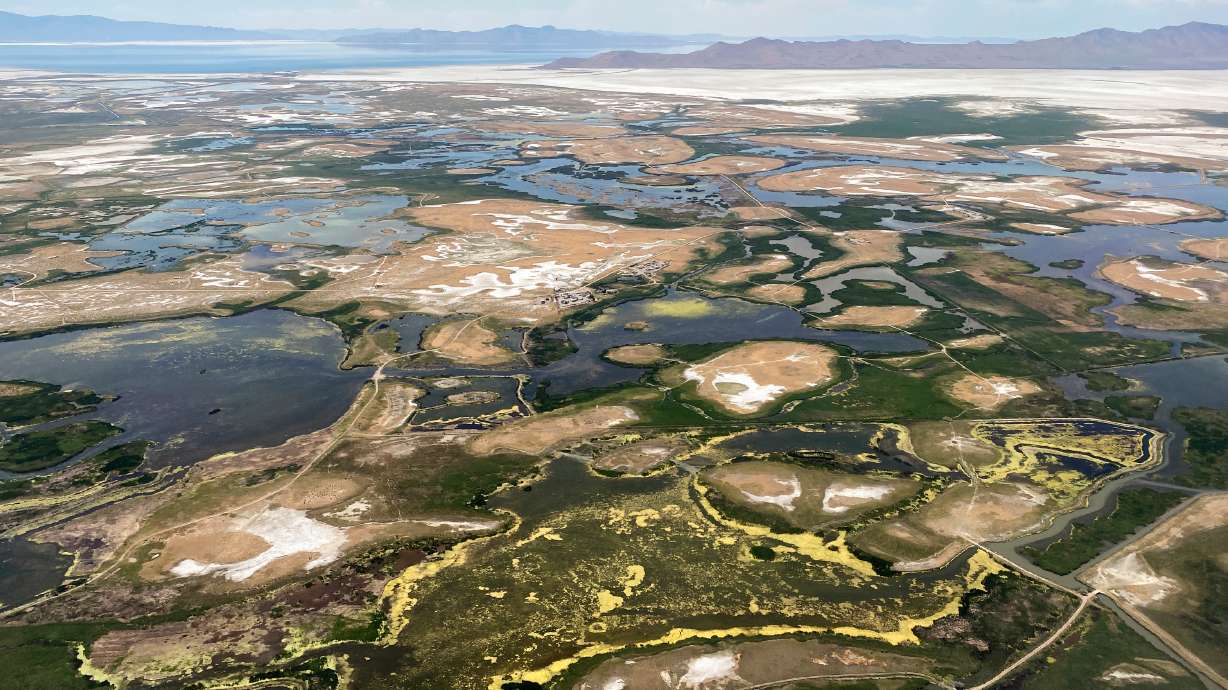Estimated read time: 4-5 minutes
This archived news story is available only for your personal, non-commercial use. Information in the story may be outdated or superseded by additional information. Reading or replaying the story in its archived form does not constitute a republication of the story.
SALT LAKE CITY — In the midst of increasing community concern over the creation of new project areas and the threats they pose to wetlands and the Great Salt Lake, the Utah Inland Port Authority on Thursday pitched a "comprehensive wetlands policy" to its board.
The policy — which won't have the chance to be formally adopted until the port authority's meeting next month in Tooele — outlines regulations and strategies to protect and conserve wetlands within its project areas.
"With this new wetlands policy, we're actually going to have an opportunity, through the Inland Port Authority, to create a mandatory source of revenue to help protect wetlands and the Great Salt Lake," Ben Hart, executive director of the Utah Inland Port Authority, said.
As far as how much revenue could be allocated to wetland and Great Salt Lake protection, Hart said it would be in the neighborhood of 1% of all tax differential from the various project areas.
"The wetlands and the Great Salt Lake are one of not just our state's greatest treasures but one of the country's greatest treasures. And when you think about it, it's actually a worldwide treasure," Hart said. "We are not going to participate in the destruction of the wetlands or harm the Great Salt Lake in any way, shape, or form."
With the proposed policy, Hart said the port authority will be able to give back and contribute to wetlands and the Great Salt Lake using funding from projects around the state.
Despite this, some groups remain concerned about how the industrial development projects will impact the Great Salt Lake and surrounding wetlands.
"The port authority has (made) promises about environmental protection in the past that they have not followed up with in any way," said Deeda Seed, with the Center for Biological Diversity and the Stop Polluting Ports Coalition.
Specifically, Seed said the policy is unclear on exactly how much money from tax differentials will be accrued and put towards conservation.
Additionally, Seed expressed concerns over the port authority's project area in the northwest quadrant — which covers approximately 16,000 acres in the northwest quadrant of Salt Lake City, as well as parts of northern West Valley City and Magna — and is adjacent to what she described as "really important Great Salt Lake wetlands."
"This area of industrial development that's happening next to these areas is of great concern. What the port authority does ... they fast-track growth," Seed said. "Our position is that that is not a smart thing to do — to subsidize and fast-track growth of industrial development — on the edges of a lake that's absolutely in crisis makes absolutely no sense whatsoever."
We need to see specifics but probably at the end of the day, if you look at absolute numbers, what they're going to destroy far outweighs this gesture of them protecting some of it.
– Deedra Seed, Center for Biological Diversity and Stop Polluting Ports Coalition
The port authority said in a release that its policy "addresses key aspects related to wetlands," including compliance with Section 404 of the Clean Water Act and highlights the Utah Rapid Assessment Procedure for Wetland Resources and the Utah Department of Environmental Quality Wetlands Program.
"Our goal is to create a sustainable and harmonious environment where development coexists with the protection of wetlands," Hart said. "This policy demonstrates our commitment to responsible land use and conservation."
Seed also said the Center for Biological Diversity and the Stop Polluting Ports Coalition are concerned with the pace of project area creation, among other things.
When asked about the rate at which the port authority is approving new project areas, Hart told KSL.com he doesn't think that the port authority is growing too quickly.
"In some ways, I'm not sure that we're growing fast enough in the sense that part of our charge is how do we take trucks off the road and how do we take carbon emissions out of the air?" Hart said.
Seed said, to her, the proposed wetlands policy is little more than a gesture from the port authority in the face of increasing community concerns over the environmental damage she and other groups believe will be inflicted on communities around the project areas.
"We need to see specifics but probably at the end of the day, if you look at absolute numbers, what they're going to destroy far outweighs this gesture of them protecting some of it," Seed said.
More information regarding the Utah Inland Port Authority's proposed wetlands policy can be found here.









